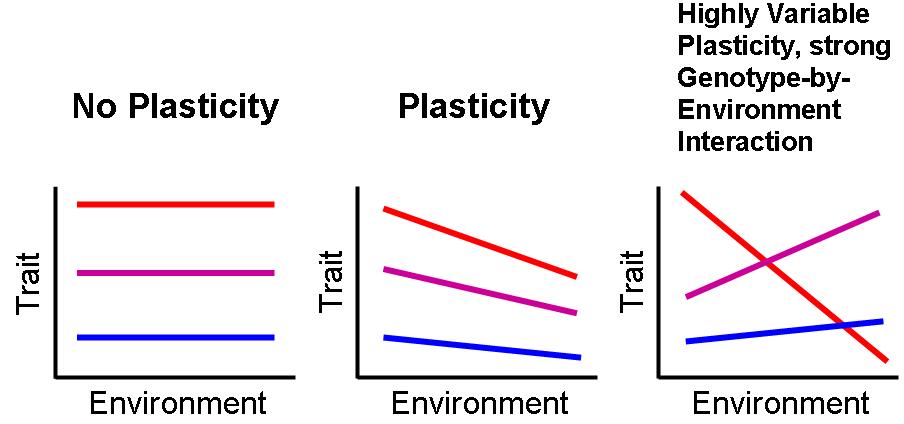Phenotypic plasticity can be defined as the ability of one genotype to produce more than one phenotype when exposed to different environments. Phenotypic plasticity is the ability of an organism to change its phenotype in response to changes in the environment.
With climate change forcing plant and animal species to adapt, shape-shifters are taking a unique approach that involves changing their physical appearance without having to migrate or evolve in order to cope, new research shows.
A Rocky Mountain mustard plant is one such species using what is called phenotypic plasticity – transforming physical traits without changing genetic code – to avoid become extinct under climate change. Specifically, mustard plants demonstrated a different flowering time in response to certain environmental conditions.
But this species isn’t the only one. Tiny killifish (Fundulus heteroclitus) found along the Atlantic coast of North America are also adapting to their changing environment by altering the structure of its gills, a form of phenotypic plasticity.

Models of population divergence and speciation are often based on the assumption that differences between populations are due to genetic factors, and that phenotypic change is due to natural selection. It is equally plausible that some of the differences among populations are due to phenotypic plasticity. We use the metaphor of the adaptive landscape to review the role of phenotypic plasticity in driving genetic evolution. Moderate levels of phenotypic plasticity are optimal in permitting population survival in a new environment and in bringing populations into the realm of attraction of an adaptive peak. High levels of plasticity may increase the probability of population persistence but reduce the likelihood of genetic change, because the plastic response itself places the population close to a peak.
Moderate levels of plasticity arise whenever multiple traits, some of which are plastic and others not, form a composite trait involved in the adaptive response. For example, altered behaviours may drive selection on morphology and physiology. Because there is likely to be a considerable element of chance in which behaviours become established, behavioural change followed by morphological and physiological evolution may be a potent force in driving evolution in novel directions.
We assess the role of phenotypic plasticity in stimulating evolution by considering two examples from birds: (i) the evolution of red and yellow plumage coloration due to carotenoid consumption; and (ii) the evolution of foraging behaviours on islands. Phenotypic plasticity is widespread in nature and may speed up, slow down, or have little effect on evolutionary change.
Moderate levels of plasticity may often facilitate genetic evolution but careful analyses of individual cases are needed to ascertain whether plasticity has been essential or merely incidental to population differentiation.
Normally researchers focus on varied geographic distribution and a species’ ability to rapidly evolve via genetics when determining climate change’s impact on wildlife, but this study shows that shape-shifting may be a potential lifesaver as temperatures continue to increase. An altered appearance could let some species stay in their natural habitat without risk of extinction.
In the new study, researchers looked at the life history, leaf shape, flowering time and other characteristics of a native wild mustard plant at different elevations in the Rocky Mountains, where warming winters are reducing snowpack and warming springs are causing an earlier snow melt. They found that the forb’s traits consistently vary over a temperature and moisture gradient from low elevations with a hot, dry climate to high elevations with wet, cold conditions. The researchers then went to an intermediate elevation and simulated climate change by reducing the snowpack, which made the plants flower seven days early, similar in magnitude to flowering time shifts over 20 to 30 years of climate change. The mid-elevation forbs that were coxed into flowering early took on the appearance of the low elevation plants, although some ended up with unexpected and unique combinations of traits. The results show the plants have great phenotypic plasticity and do not all change in the same ways.
‘Because climate change affects some environmental factors like precipitation and temperature but not others like day length, phenotypic plasticity could allow some species to persist in a habitat despite changing conditions and provide more time for them to evolve and migrate.
